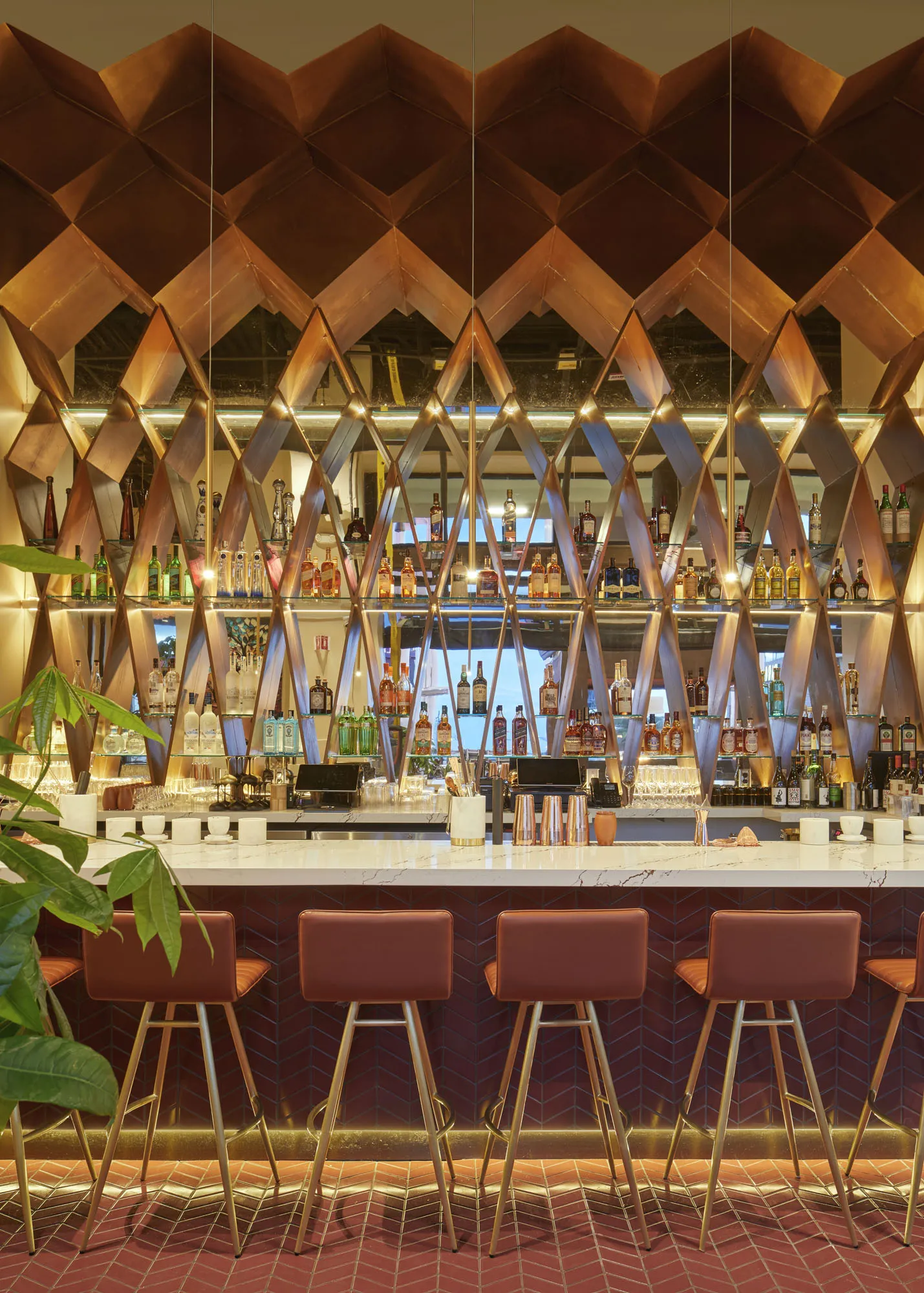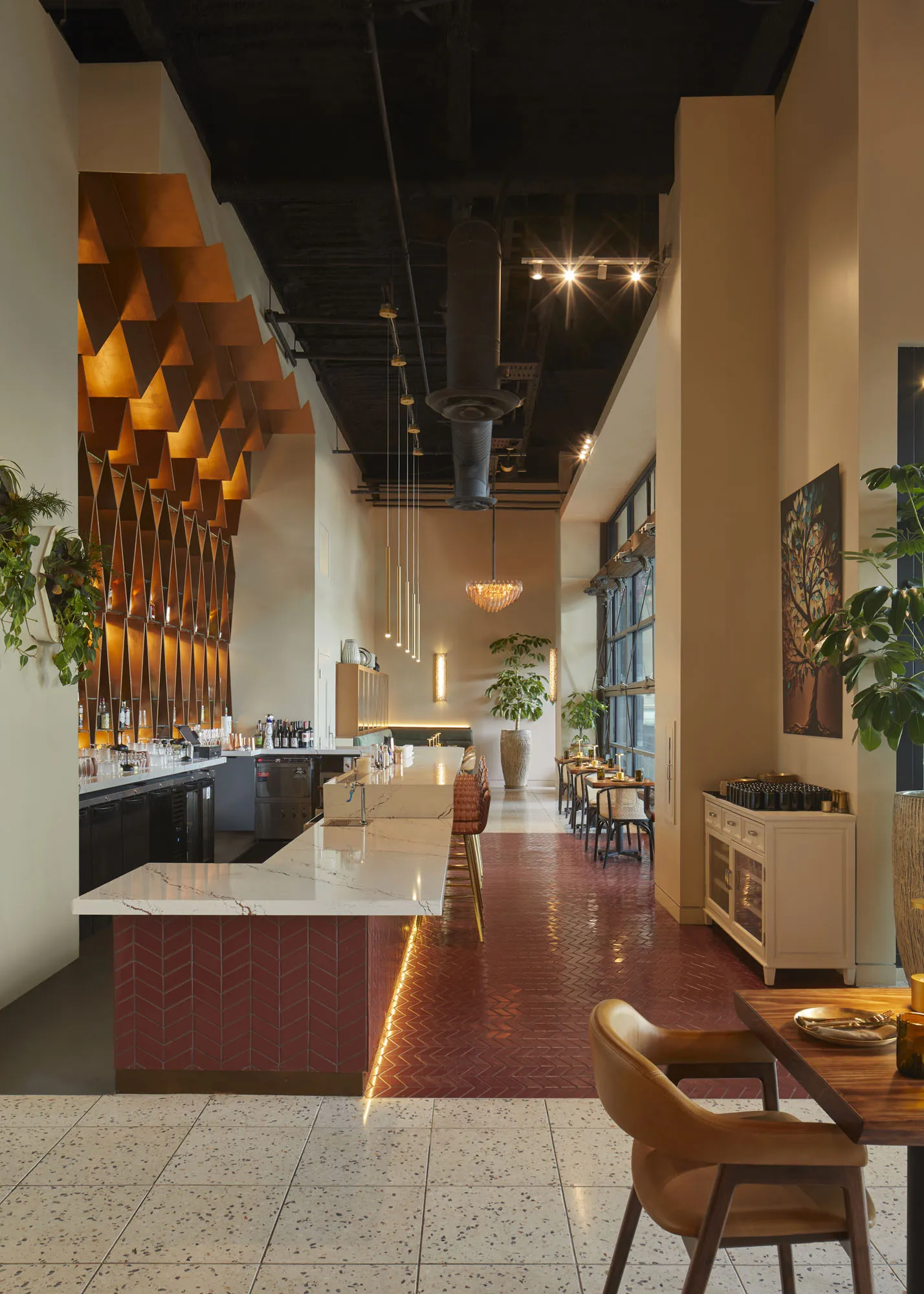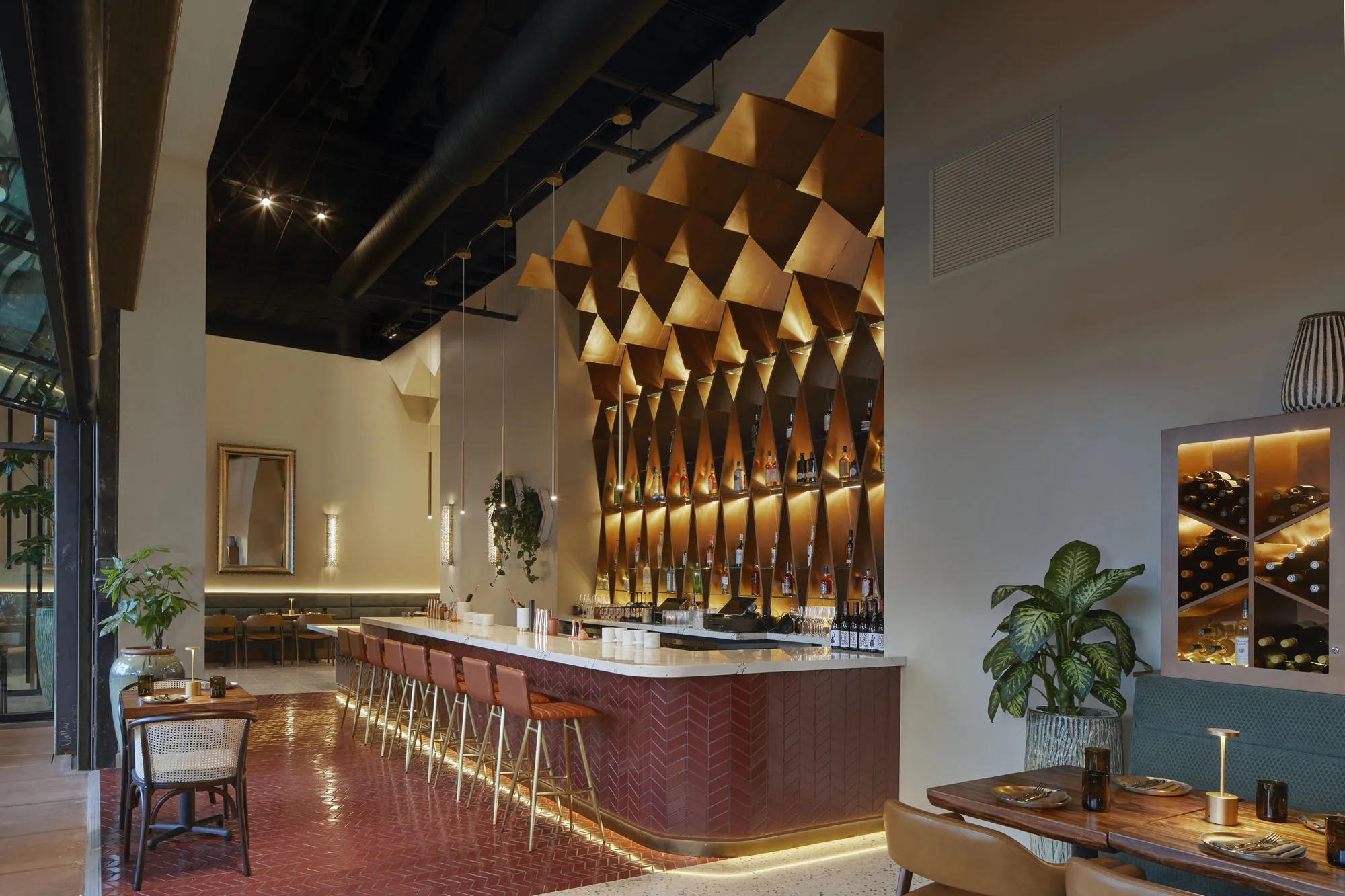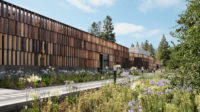A Contemporary Indian Restaurant Brings Atypical Cuisine—and High Design—to a Bay Area Mall
Emeryville, California

Studio BANAA looked to the pointed and curved geometries found in Indian textiles and architecture for this Bay Area restaurant. Photo © Mikiko Kikuyama
Architects & Firms
When the owners of San Francisco’s Michelin-recognized, contemporary Indian restaurant Rooh decided to open the 2,480-square-foot Pippal restaurant in Emeryville, just across the bay, they had a clear plan. “They really wanted the bar to be the star of the show,” says Dane Bunton, cofounder and managing principal of San Francisco–based Studio BANAA, “so that was the focal point.” The bar would function as a magnet to draw folks off the street and into the space.
That “street” is Bay Break, a second-story dining terrace at the Bay Street Emeryville mall. Restaurants at malls are not uncommon in driver-friendly Northern California. In fact, this mall had previously been home to several typical mall eateries. The COVID-19 pandemic forced many of these to close, and after the mall was sold, its new owners developed the dining terrace with more adventurous venues. Pippal is set between Humphry Slocombe Ice Cream and Arthur Mac’s Little Snack—expansions of two Bay Area hot spots. Still, the purveyor of regional Indian cuisine is the only high-end restaurant on Bay Break. Bunton notes that with AMC Theatres anchoring the mall, Pippal hopes to serve the dinner-and-a-movie crowd.
And what better to pull in people after a two-hour film (or two hours browsing at Uniqlo) than an attractive bar? Pippal’s centerpiece is embellished with a three-dimensional, diamond-shaped back wall that is undeniably eye catching, and its forms successfully focus those eyes on tiers of spirits bottles. To inform this design, Studio BANAA looked at various Indian precedents. It considered the pointed and curved geometries found in Indian textiles and architecture as source material, then changed them up. “The spatial form has evolved to become more of an undulated triangulated shape,” says Nastaran Mousavi, cofounder and design director of Studio BANAA. “And the reason was to think of this piece as an evolved version of the arches, not an exact replica.”


Photo © Mikiko Kikuyama
The complex shape is replicated as a wall piece in one of two dining areas that flank the bar, while a diamond-shaped glass-fronted wine case lines the other. Off-the-shelf chandeliers are made of hundreds of handblown glass polyhedrons that also reflect the bespoke triangulated design.
Pippal’s bar was purposefully placed at the center of its T-shaped plan. The two ends of the T can be sectioned off for private parties, Mousavi says, but Studio BANAA unified the two spaces with the same palette, materials, furniture, and fixtures. An industrial garage door can separate the indoor dining area from outdoor dining on those rare unpleasant Bay Area days. A large fire pit also marks this divide; it is part of Bay Break, not Pippal. In fact, the casual observer might be confused about where the restaurant ends and the terrace—which has its own dining tables and chairs—begins.


Photo © Mikiko Kikuyama
The earth-toned décor of Pippal helps distinguish it from the white and black colors of the bay-facing deck. Brown and tan furniture, green upholstered banquette seating and ceramic planters (and plants), dark orange barstools, and brick-red, zigzagging tiles on the bar’s facing and floor make the interior warm and inviting. This earthiness is accented with some bling, including sparkling brass-colored light sconces. A mural by Northern California artist Amandalynn adds a burst of bright colors. It is inspired by the restaurant’s namesake pippal—fig tree—which is traditionally used as a gathering place in India.
At Pippal, yesterday’s fig tree may have been replaced with today’s bar, and corresponding organic forms with a parametric scheme. But the prominence of the novel yet comfortable design should help to ensure that passersby will indeed stop and look and, hopefully, gather anew.






